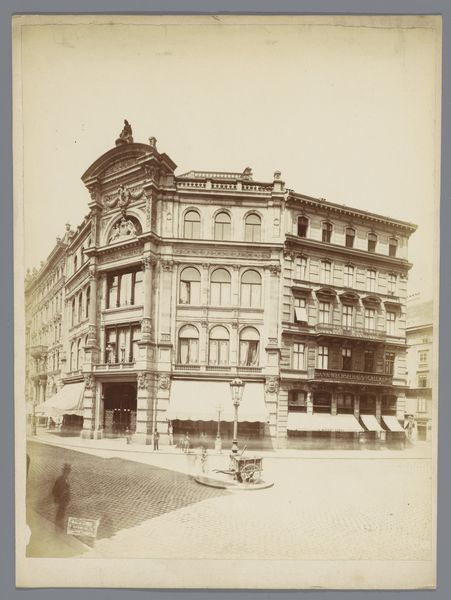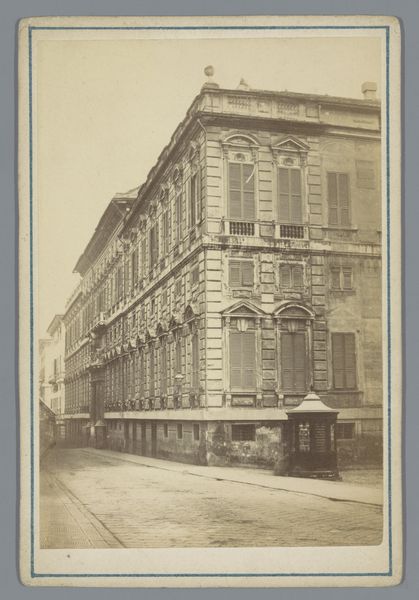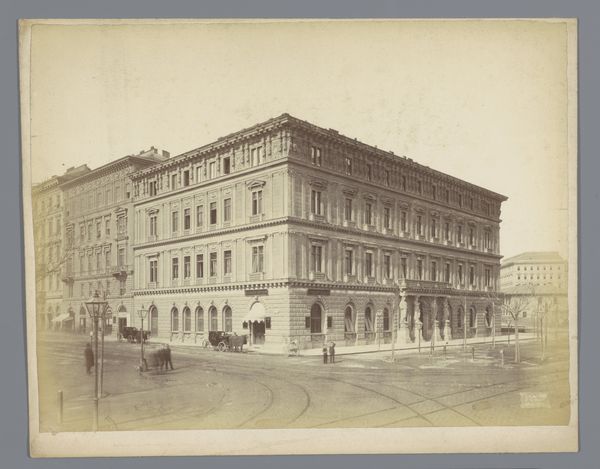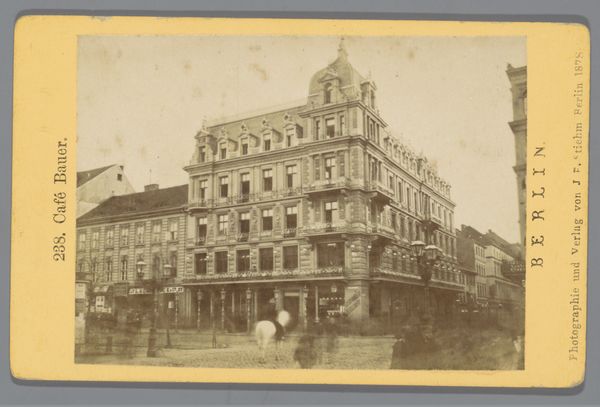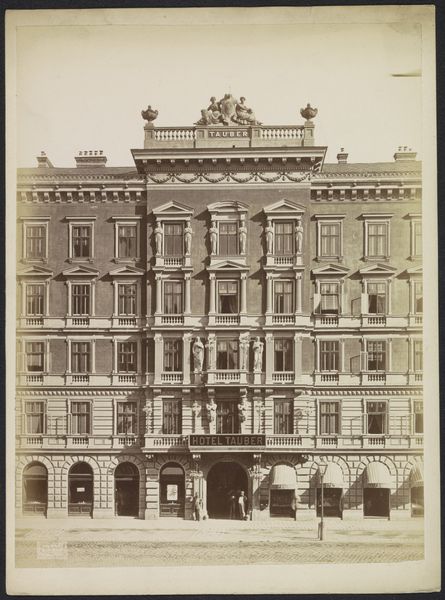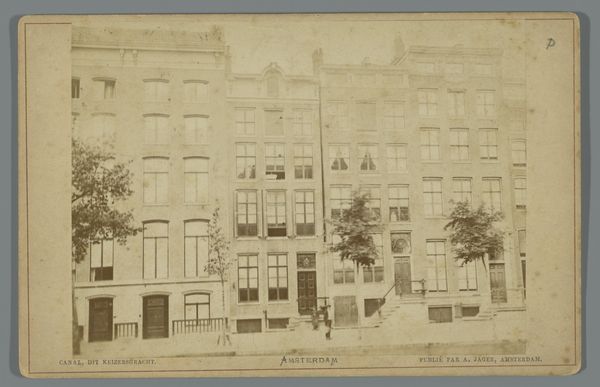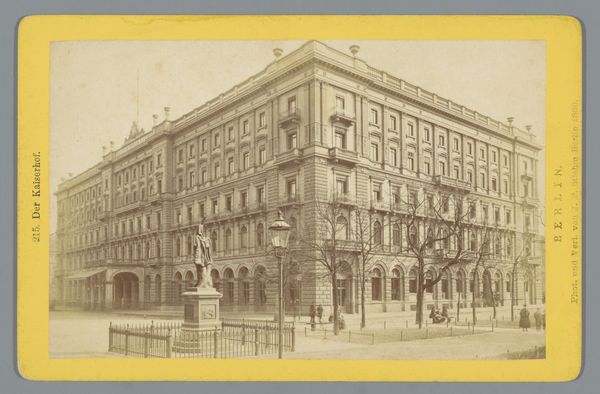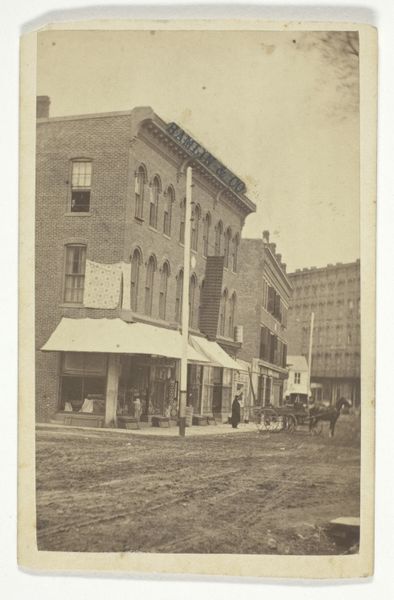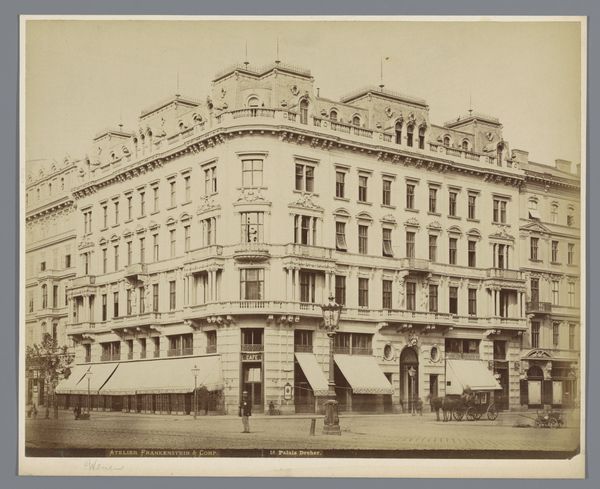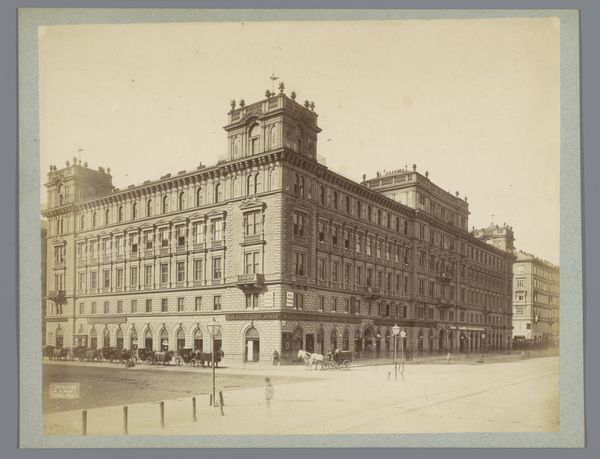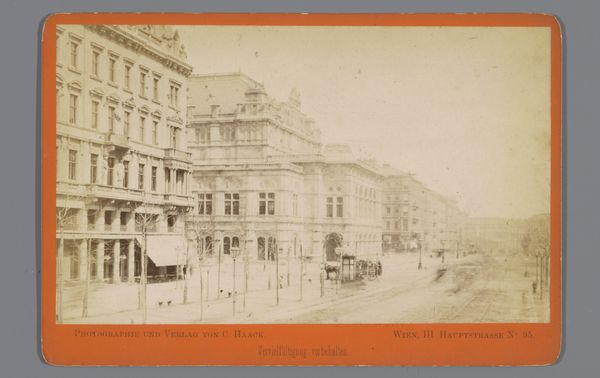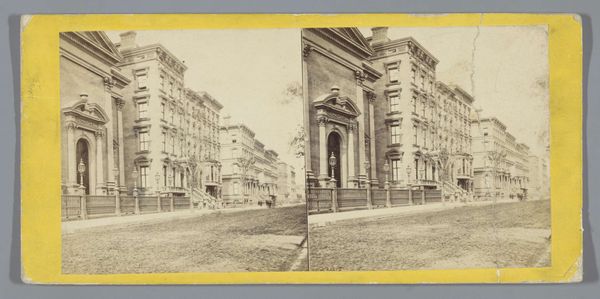
Dimensions: height 280 mm, width 221 mm
Copyright: Rijks Museum: Open Domain
Curator: Standing before us is an impressive daguerreotype, likely taken between 1865 and 1891, entitled "Gezicht op Hotel Kummer in Wenen, Oostenrijk" by Hermann Heid. Editor: What strikes me immediately is the clarity and sharp detail captured in this image, even with the sepia tone softening the overall effect. The geometry is pleasing, and the building really fills the frame. Curator: The photographer, Hermann Heid, captures not just the physical structure of the Hotel Kummer, but also a moment in the city's history, wouldn’t you agree? We get a glimpse into the bustling street life of Vienna at that time, the fashion of the pedestrians, and the early forms of urban transport. This work invites us to reflect on the socio-economic fabric of Vienna in the late 19th century. Editor: Yes, but look closer. It's more than just documentary; it's a study in form. Observe how the architectural details are so carefully rendered—the cornices, the window arrangements, the way the light plays across the façade. It's almost neoclassicist in its precision. It feels like the photographer is acutely aware of capturing all those linear details that add a layer of grandeur to the everyday. Curator: Absolutely, neoclassicism was a key element of civic architecture then, but in terms of public function, hotels played a key role, too, catering to travellers and mediating social mobility, acting as public and private spaces at once. How Heid chose to portray this specific hotel gives clues about his potential sponsors or the reputation of Hotel Kummer as an institution at the time. Editor: You bring a critical contextual aspect to light, however, focusing again on composition: The placement of the camera is intentional. It gives a sense of scale and invites the viewer to scan this architectural subject at different levels, admiring it. There is definitely intent and an underlying awareness of spatial qualities in this early form of photograph. Curator: Perhaps we could ponder more on the silent figures inhabiting the periphery? They speak volumes about the era’s rigid social structures! It offers such a rare candid capture. Editor: Fair enough! From my view, what stands out is this: even the photographic qualities and elements become testaments to their place and time. Curator: An invaluable glimpse into history, captured using one of the earliest forms of photography. Editor: Precisely. It’s not only documentation, but the beautiful marriage between technical process and keen observation that transcends the purely informational.
Comments
No comments
Be the first to comment and join the conversation on the ultimate creative platform.
